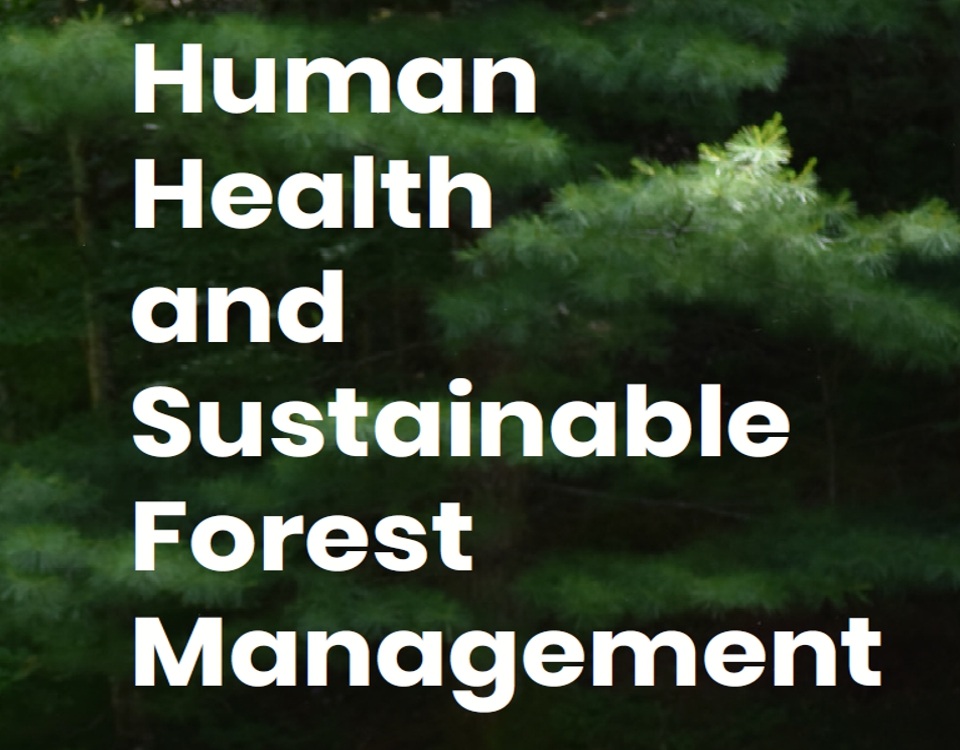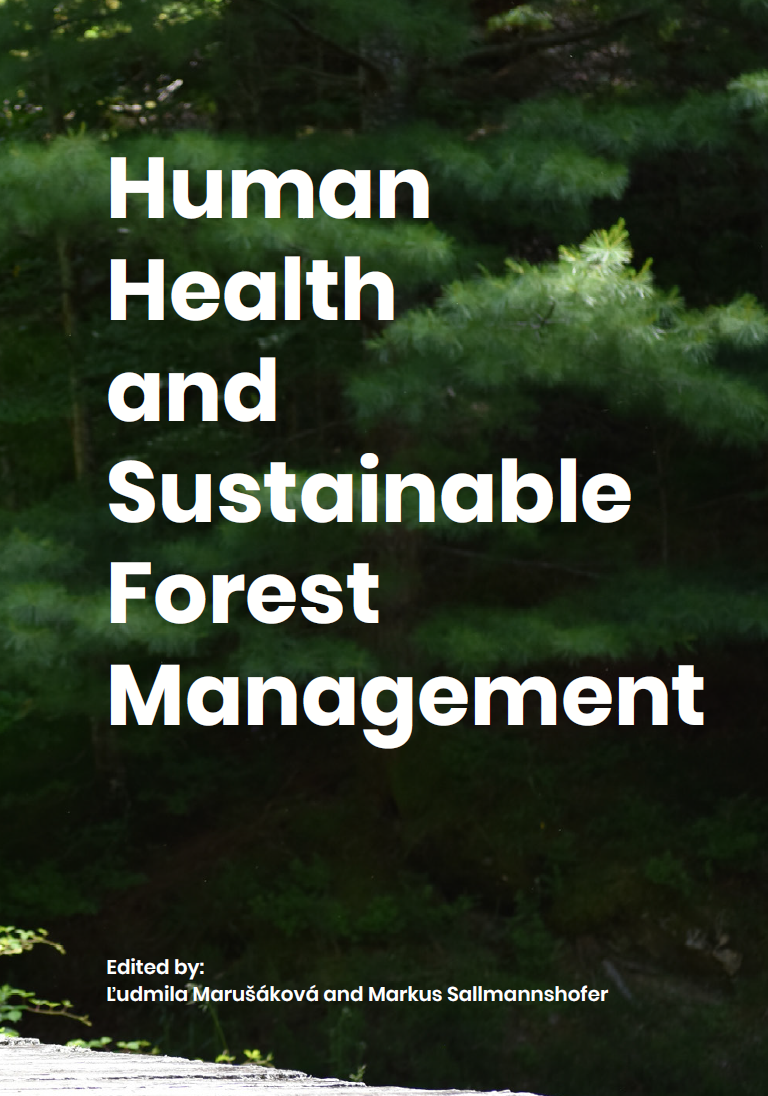Scientific review: Human health and Sustainable Forest Management

Forestry Arboretum Kysihýbel as a unique object of innovative methods in didactics of geography
18. September 2019
Taking advantage of the Stimulating Green Environment for Non-Formal Learning with Children with Cognitive Disabilities and Learning Disorders
4. October 2019
Scientific review: Human health and Sustainable Forest Management
Authors: Ľudmila Marušáková (FOREST EUROPE – Liaison Unit Bratislava) et al.
Summary: Markus Sallmannshofer (BFW, Wien); Dirk Schmechel (LWF, Freising)
Report: Expert Group Forests and health of FOREST EUROPE
S umming up current knowledge on health benefits of forests and integration of social aspects of forests such as recreation, tourism, human health and well-being into sustainable forest management is a main focus of the study “Human health and sustainable forest management”. The reports are now published by the team of authors led by the FOREST EUROPE Expert Group on Human Health and Well-being. Link: https://foresteurope.org/wp-content/uploads/2017/08/Forest_book_final_WEBpdf.pdf
Objectives of the study
Forest policies shall respond accordingly to global trends, challenges and demographic changes and increase preparedness of the forest sector to meet the needs of the growing urban populations for a healthy green environment. Human health is more and more crucial today: European society is currently becoming influenced by global trends and demographic changes: rapid urbanisation, globalisation, digitalisation, ageing of the population as well as a sedentary and stressful modern lifestyles. Urbanisation is often associated not only with mental stress, but also with physical threats and adverse environmental exposure, such as noise and air pollution. Nervousness, stress and burnout as well as associated physical diseases are serious issues of the times we live in.So health- and well-being benefits and other social functions of forests, such as recreation, tourism, forest education, aesthetic appreciation or spiritual experience, are today an increasingly important part of the values people derive from forests. Forests and trees supply an abundance of ecosystem services that help in creating healthy living environments: forests play an important role in mitigating floods, droughts, the effects of noise, purifying water, binding toxic substances, maintaining water quality and soil fertility, helping erosion control and protecting drinking water resources. Forests and trees have a positive impact on air quality through the deposition of pollutants to the vegetation canopy, reduction of summertime air temperatures, and a decrease in ultraviolet radiation.
Content of the publication
The report sums up:- research evidence and synthesises knowledge from literature linked to the health benefits of forests, namely the impact of forests on mental, physiological and physical health, and also deals with social benefits from forests
- insights into forest management planning to investigate how forest management could cope with societal demands related to human health and well-being
- a vast range of concepts for utilising the beneficial effects of forests and describes approaches that focus on forests for health promotion or therapeutic interventions.
Within this five key mechanisms for the health benefits of forests are identified:
- Reduced exposure to noise and air pollution
- Stress reduction and psychological and physiological restoration
- Strengthening the immune system through contact with nature
- Increased physical activity and reduction in obesity rates
- Better social contacts
There is strong evidence that forest visits have a positive impact on restoration and psychological wellbeing, improve mood and attention and enhance psychological stress recovery. It has also been proven that walking in natural environments produces stronger short-term cognitive benefits than walking in a residential urban environment. There is also substantial evidence of the potential benefits of contact with nature for avoiding health problems attributable to chronic stress and attention fatigue. Similarly, there is increasing evidence that visits to forest environments have positive physiological effect such as lower blood pressure and pulse rate, reduce cortisol levels and suppress sympathetic nervous activity. Even short repeated visits to a green environment may lead to positive changes in cardiovascular risk factors as a result of stress recovery.
As for social benefits, it is acknowledged that social connections enjoyed during a forest trip may encourage or enable people to repeat their activity and keep engaging with forests in the future. Socialising with friends and strengthening social relationships was found to be important in a forest based physical activity programmes. Social contacts among children during outdoor play may positively impact their socioemotional development and help to establish social cohesion. Several studies demonstrated that, in rural natural environments, children displayed positive social behaviours. Three categories were identified in which social connections were an important part of a forest visit bringing benefits to health and well-being (strengthening social relationships, developing new social relationships, and participation and community capacity building).
The study is deviding the concepts for utilising the health benefits of forests into four categories embracing a broad range of various programs, activities and well-described best-practice-examples:
- Forests for human health promotion and disease prevention (healing forests and spas, healing forest trails, regeneration and wellness paths, forests for mindfulness walks and programs, forest bathing, trails for the soul and anti-stress programs).
- Forests for therapy and rehabilitation (forest therapies, wilderness therapy programs, forest therapy walks, forests in rehabilitation centres and hospitals, forests for social prescribing addressing social isolation, therapeutic handcrafts and horticultural activities)
- Forests for education providing indirect health benefits (educational outdoor- and forestpedagogy-programs such as field trips, thematic excursions, observational trips, workshops, kindergartens, forest play groups, forest day nurseries, forest schools, clubs and camps)
- Forests for recreation and tourism (guided walks, educational trails, thematic excursions, horse trails, mountain-bike and Nordic walking trails, ski tracks, orienteering programs, adventure parks, forest rope courses, treetop walks, forest holidays, forest cabins, nature trails)
Recommendations for policy and decision-makers
To integrate human health aspects into sustainable forest management (SFM) European and national forestry policies should address modern public health agendas and the potential role of forests in health promotion and prevention. Forest policies shall increase the preparedness of the forest sector to meet the needs of growing urban populations for a healthy green environment.
Management of forests near urban areas is in particular under pressure from citizens who feel they should have a right to influence the management of their favourite places in surrounding forests. These aspects should, therefore, be, integrated into SFM - planning which represents, in the majority of cases, a participatory process involving various stakeholders, citizens, businesses, organisations and other interested parties in and around the forest being managed. Public involvement and the multitude of demands and expectations inevitably generate conflicts. These conflicts put new pressures on forests and forest managers. Some of the most difficult decisions in sustainable forest management concern the trade-offs between maintaining timber production and creating areas suitable for nature-based tourism, sports and health promotion and rehabilitation. Managing forests to satisfy the needs of various interest groups (forest owners or managers, other stakeholders) represents a global challenge for the future. This affords:
Enhancement of cross-sectoral cooperation: When speaking about human health and well-being, forest owners and managers should engage with local communities and intensify cooperation with professionals from other sectors. More specifically, cooperation with experts from public healthcare systems, education systems, sport, recreation and tourism sectors will be inevitable. Therefore, more cooperation is needed between forestry experts, planners, landscape architects, public health professionals and others involved in supporting healthy living.
Encouragement of public participation and inclusivity: When speaking about human health and well-being, forest owners and managers should engage with local communities and intensify cooperation with professionals from other sectors. More specifically, cooperation with experts from public healthcare systems, education systems, sport, recreation and tourism sectors will be inevitable. Therefore, more cooperation is needed between forestry experts, planners, landscape architects, public health professionals and others involved in supporting healthy living.
Mechanisms and funding of provision of forest ecosystem services: Nowadays, multifunctional forest management is envisioned increasingly as a viable alternative to a simple focus on timber production, however, assessing the relative economic value of and level of demand for various forest products and services is difficult because many of them are not marketed or their markets are undeveloped. Human well-being is a central component of the ecosystem services concept.
Mechanisms and funding for the long-term provision of forest ecosystem services for social and health benefits will need to be developed and applied: Valuation of ecosystem services is used as a tool that enhances the ability of decision makers to evaluate trade-offs between alternative ecosystem management regimes.
Monitoring and necessary data acquisition: From the perspective of landscape planning, one of the challenges is the monitoring of forest visitors and their recreational demands. Therefore, schemes for monitoring of outdoor recreation and associated health benefits should be developed and carried out.
Investment in research, innovation, education and development of new skills: More research is, however, still needed, for example, to study the dose-response relationship and longterm health effects of rehabilitation and recovery from illnesses. Moreover, there is still a gap in scientific knowledge that hinders the economic valuation of the health benefits of forests. By integrating social and health aspects into SFM, the forest sector gains more opportunities to provide new green jobs and income for households, particularly in rural areas. Training and education needs to embrace and facilitate a comprehensive view of the multiple functions of forests.
Better accessibility of forests: Health benefits are best achieved through regular visits to forests. Therefore, an easy access to and availability of health beneficial forests needs to be enhanced and secured for all European populations.
Communication is key: Good communication improves public understanding of decisions related to forests and helps to minimize conflicts in the use and management of forested areas. Interaction with all stakeholders and the local community is essential for the development of any interventions and programs encouraging populations to use forests for health and well-being.




